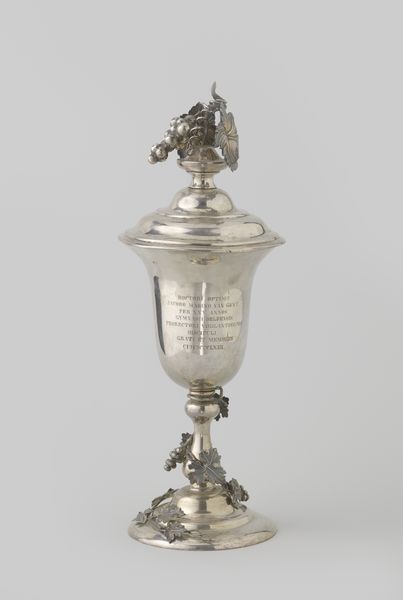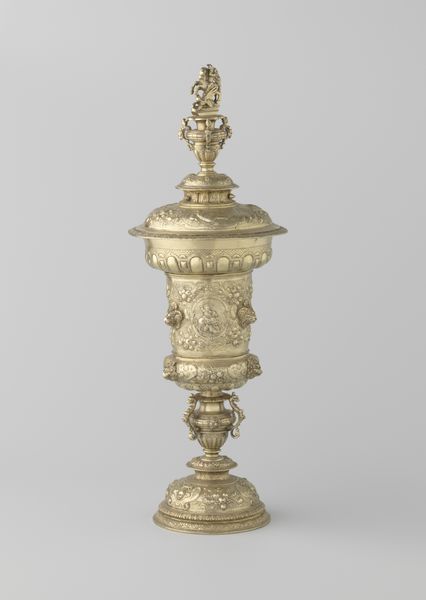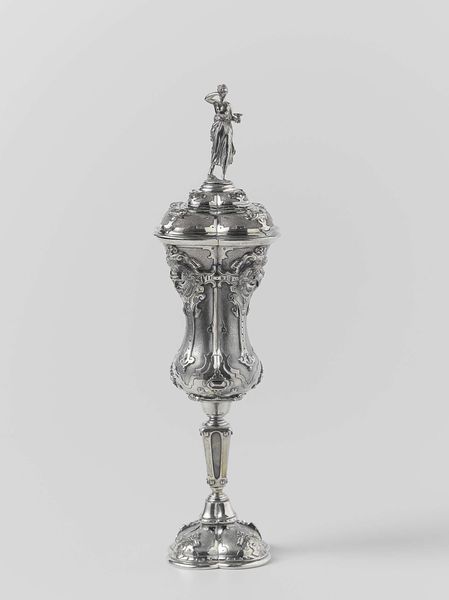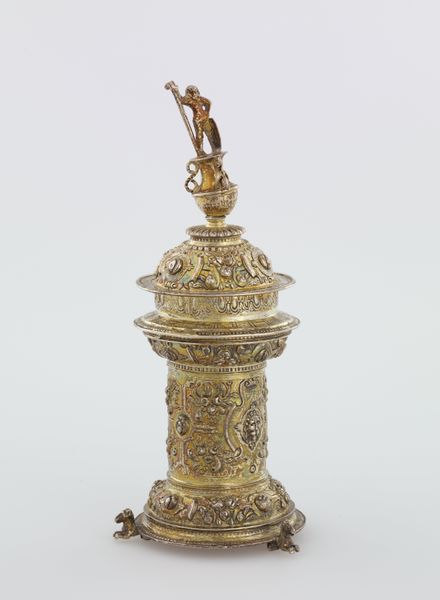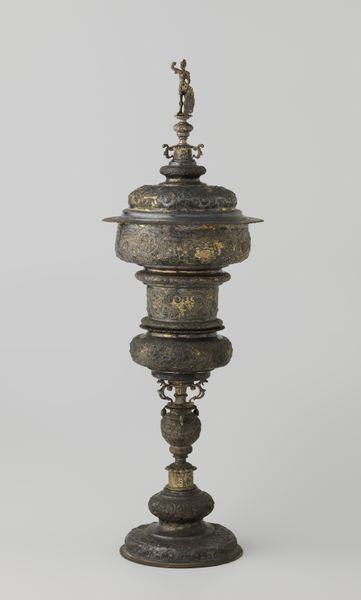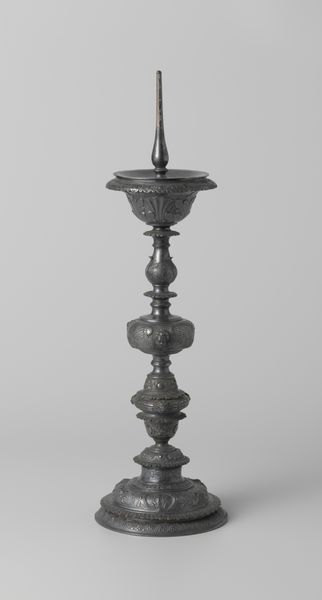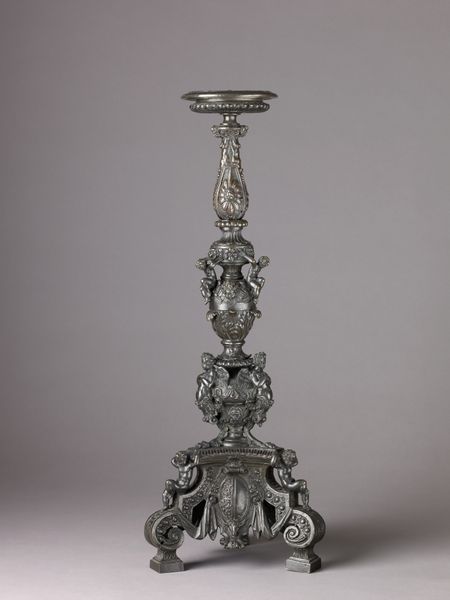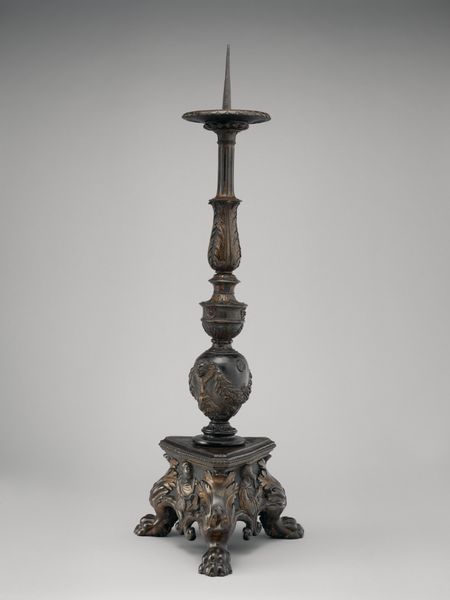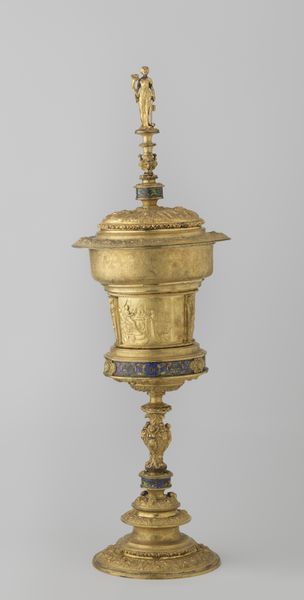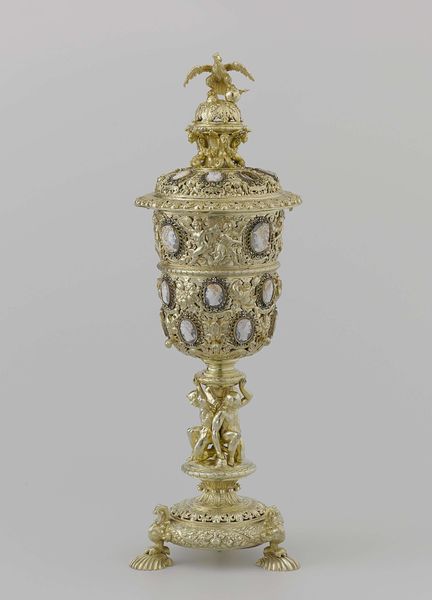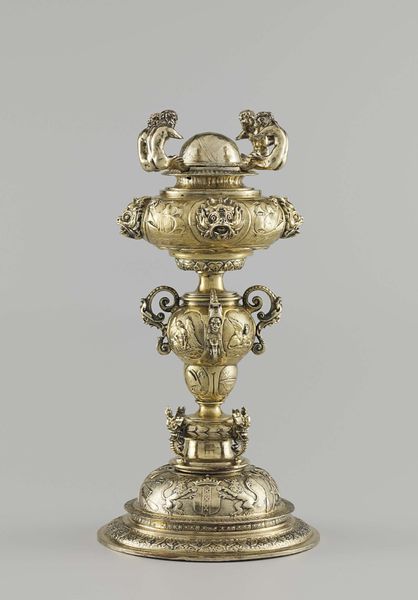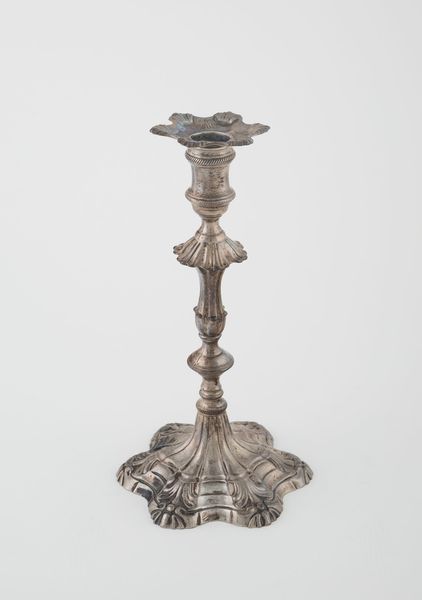
Galvanoplastische reproductie van de beker van het St. Maartens- of brouwersgilde van Haarlem 1881
0:00
0:00
elkingtonco
Rijksmuseum
silver, metal, sculpture
#
silver
#
metal
#
11_renaissance
#
sculpture
#
history-painting
#
decorative-art
Dimensions: height 46 cm, diameter 16 cm, weight 1367 gr
Copyright: Rijks Museum: Open Domain
Editor: This is an impressive electroplated reproduction of the Cup of the Haarlem Brewers’ Guild made by Elkington & Co. in 1881. The sheer amount of detail is striking, and I'm curious about what it represents. What do you see when you look at this piece? Curator: It's fascinating how objects like this can reveal the complex interplay between commerce, civic identity, and artistic expression in 19th-century Holland. This piece isn’t just decorative; it’s actively participating in a narrative about Haarlem’s history and economic power. Do you see any historical figures depicted? Editor: I do notice a man on horseback at the very top; and around the main body of the cup there are several small scenes or vignettes, but they're too small for me to decipher what they're about. Curator: Exactly. That equestrian figure is likely a reference to a historical leader or patron, while the vignettes might depict scenes of Haarlem's brewing industry or important events in the city's history. Think of it as visual propaganda, designed to legitimize the Guild’s power and influence. Do you consider it a straightforward historical record, or something more complex? Editor: I now understand that it isn't purely representational, as it attempts to validate the Guild's position of power in Haarlem society. It uses imagery that reflects their importance, right? Curator: Precisely. Objects like these are tools. They shaped public perception and fostered a sense of collective identity. It is all tied into history and marketing of cultural heritage. Editor: It's been fascinating to see how an object of decorative art can be understood through the lens of cultural and political power! Thanks for shedding some light on that. Curator: My pleasure. It's crucial to remember that art doesn't exist in a vacuum, especially decorative art. It actively shapes and reflects the society it comes from.
Comments
No comments
Be the first to comment and join the conversation on the ultimate creative platform.
